I'm building a TTL to fast-NIM converter using an LMH6702 op-amp (datasheet).

Figure 25 on page 13 shows almost exactly the circuit I'm building, with Rt=50ohm, Rg=3.1k and Rf=237. In that drawing they show that the input resistor to the positive input is 25ohm.
I found here several questions related to that resistors, and they were answered that the resistor needs to be on the same size as the input resistors to the negative input, and in that case I need it to be at about 3.1k.
Is that correct?